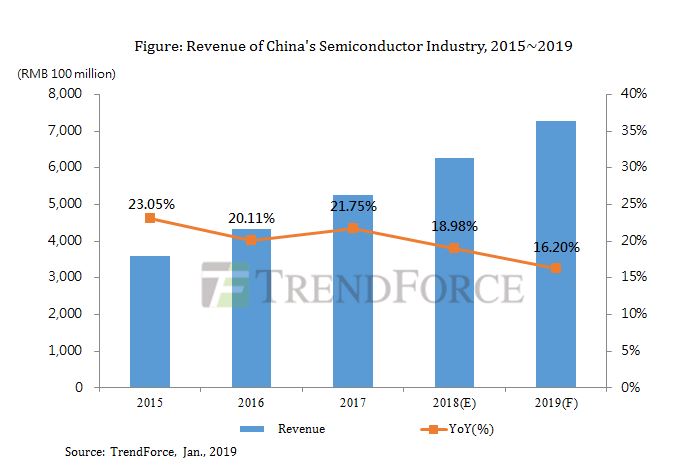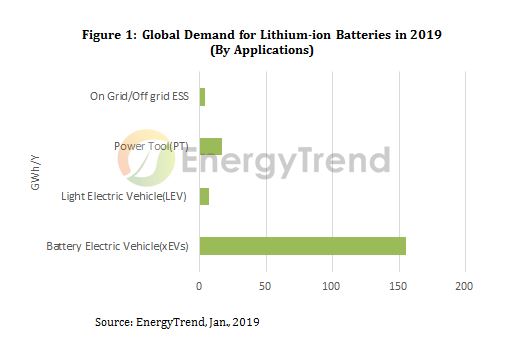Stiff Competition in TV ODM Market; Foxconn Outperforms TPV to Top the Shipment Ranking
WitsView, a division of TrendForce, reports that Foxconn is expected to take the first place in the global shipment ranking of LCD TV ODMs for 2018, for the brand benefitted from the prosperous business of Sharp, a subsidiary of Foxconn, as well as stable orders from Sony and VIZIO. TPV slid to the second place, with TCL and BOEVT following the third and fourth.

“All the four major TV ODMs have their in-house panel supply networks, enabling them to offer more flexible prices to clients and to secure orders amid the tight supply of panels”, says Jeff Yang, the research manager of WitsView. The companies have also made adjustments to their business modes due to the slowdown in the global TV market, allocating increasing capacity to own-branded TVs to boost the shipments.
Major TV ODMs put increasing focus on own-branded products to boost the shipments
After a significant shipment increase in 2017, the Sharp-branded TVs of Foxconn are expected to see only marginal growth this year. This is because the falling panel prices in 1H18 offset Foxconn’s advantages of in-house panel supply, and Xiaomi is emerging as a key competitor with surging demand for its Mi TV at the same time. Together with stable orders from Sony and VIZIO, Foxconn’s global TV shipments for 2018 has a great chance to total 16.5 million units, outperforming TPV, the previous leader in the TV ODM market.
TPV topped the TV ODM ranking by shipments in 2017, but is influenced by the financial issues of some Internet TV brands in China and VIZIO’s transferring orders to other ODMs this year. Although TPV has been expanding the shipments of its own-branded Philips and AOC TVs, the increased sales may not offset the decline in its annual global shipments of TV sets. Therefore, WitsView anticipates TPV to slide to the second in the ranking, with an estimated TV shipment of 15.3 million units.
The market to see limited TV ODM orders; secured panel resources will be the key to success amid the intensified competition
TCL’s TV shipments for 2018 is expected to total 10.4 million units, ranking the third, as it benefited from the surging demand for Mi TV in China and Southeast Asia. In comparison, BOEVT, whose profits are significantly influenced by the drop in panel prices in the first half of this year, would record a shipment of 9.5 million units, taking the fourth place. On the client side, BOEVT has to give up some of its low-priced TV ODM orders, and focuses on developing major clients like Samsung and LGE.
WitsView expects intensified competition in the TV ODM market in the future, as panel makers like HKC and INX have been actively integrating downstream TV ODM services, while Chinese companies like KTC and AMTC continue to feature their cost advantages.
Overall speaking, the integration of own-branded products to the original ODM business models appears to be a double-edged sword for TV ODMs. With own-branded TVs, the companies are able to keep a certain level of availability rates during the fluctuations of orders. However, the business of own-branded TVs may be unfavorable for ODMs when they compete for orders from international brands like Samsung and LGE, who may worry about the capacity allocation of the ODMs and may consider the own-branded TVs as their potential competitors.
WitsView notes that the two business models will co-exist in the market in the future, with their own pros and cons. For TV ODMs, their ultimate strategy will be avoiding the market competition between their own-branded TVs and TVs of their clients, seeking more reliable panel supply, and increasing their cost advantages. Only in this way can they secure the orders and meet the demand from clients.
在线留言询价

Revenue Growth in China's Semiconductor Industry Would Slow Down to 16.2% in 2019 due to Pessimistic
- 一周热料
- 紧缺物料秒杀
| 型号 | 品牌 | 询价 |
|---|---|---|
| BD71847AMWV-E2 | ROHM Semiconductor | |
| CDZVT2R20B | ROHM Semiconductor | |
| RB751G-40T2R | ROHM Semiconductor | |
| MC33074DR2G | onsemi | |
| TL431ACLPR | Texas Instruments |
| 型号 | 品牌 | 抢购 |
|---|---|---|
| STM32F429IGT6 | STMicroelectronics | |
| IPZ40N04S5L4R8ATMA1 | Infineon Technologies | |
| BP3621 | ROHM Semiconductor | |
| BU33JA2MNVX-CTL | ROHM Semiconductor | |
| TPS63050YFFR | Texas Instruments | |
| ESR03EZPJ151 | ROHM Semiconductor |
- 周排行榜
- 月排行榜
AMEYA360公众号二维码
识别二维码,即可关注


请输入下方图片中的验证码:

























